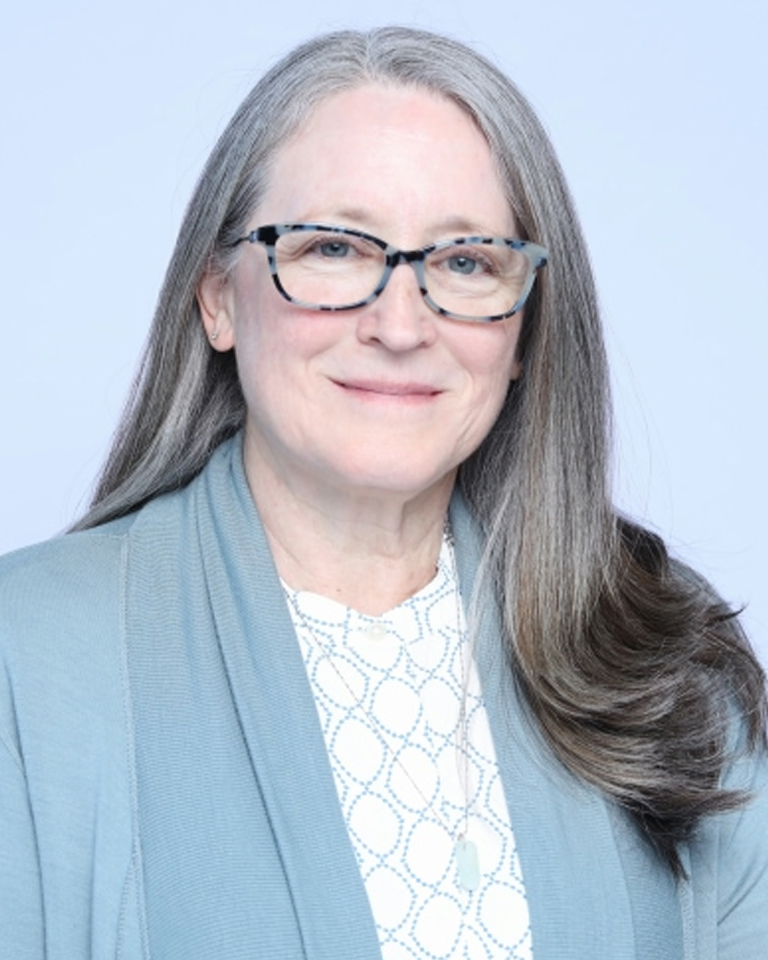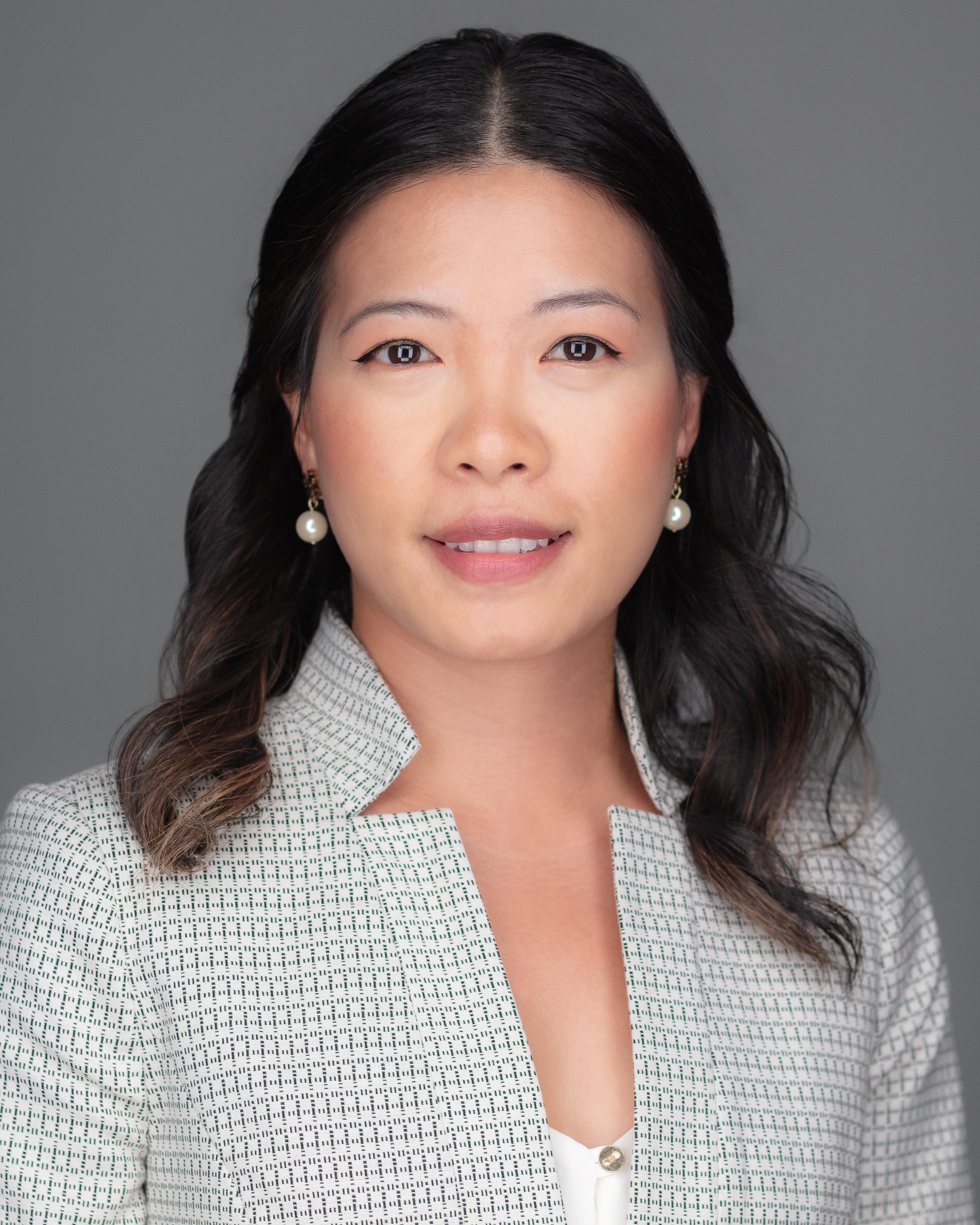Updates in the Management of Follicular Lymphoma: An Advanced Practice Perspective
Part 2: Updated Treatment Options for Relapsed/Refractory Follicular Lymphoma
Susan Woodward, MSN, APRN, AOCNP®, Zanrha Esteban, MPA, PA-C, and Amy Sidorski, MS, ANP-C, review updated treatment strategies for relapsed/refractory follicular lymphoma. They explore current and emerging second-line options, drawing on key findings from the AUGMENT and inMIND trials and the resulting drug approvals. They also highlight the latest CAR T-cell therapy and bispecific antibody data, drug approvals, and ongoing trials in the third-line and beyond setting.
Chair

Susan Woodward, MSN, APRN, AOCNP®
Moffitt Cancer Center
Faculty

Zanrha Esteban, MPA,
PA-C
Moffitt Cancer Center

Amy Sidorski, MS, ANP-C
Rocky Mountain Cancer Centers
Transcript
Susan Woodward: Welcome to part two of our roundtable discussion about follicular lymphoma. Myname is Susan Woodward, and I'm back with my colleagues Zanrha Esteban and Amy Sidorski. Zanrha and Amy, thank you for joining me today. In the first part of our discussion, we talked about the diagnosis of follicular lymphoma and frontline treatment. Now, let's talk about updated treatment options for relapsed/refractory follicular lymphoma. So, in relapsed/refractory follicular lymphoma, the optimal therapeutic regimen in this setting has not been established. So again, indications for treatment: If the patient is asymptomatic, we don't necessarily have to treat immediately, but the patient should be followed closely. The GELF criteria are also used at the time of relapse or progressive disease. A late relapse is defined as patients that relapse more than 24 months after the initial chemoimmunotherapy, or more than 12 months after single-agent rituximab. And the majority of them will have a clinically indolent course.
They'll require intermittent treatment over decades, and survival rates mirror the general population. Treatment focuses on alleviation of symptoms, reversal of cytopenias, and improvement in quality of life. It's important that we recognize early treatment failure, so patients progressing within 24 months, we call that POD24, and that's of initial immunochemotherapy or within 12 months of single-agent rituximab. We offer these patients more aggressive therapy because they do poorly with standard treatment. So, a clinical pearl is that we always want to re-biopsy if the clinical suspicion for transformed lymphoma is there. And that would be signs of rapid progression, patient has B symptoms, you see a very high LDH, or a very high SUV uptake on PET image. Transformation rates are at about 30% at 10 years. So, late relapse or non-POD24 patients can have a median overall survival of greater than 20 years, and that's actually similar to the expected general population survival.
One point to make is that it is difficult to show an overall survival benefit in clinical trials for those patients, the late-relapse patients. Progression within 24 months or POD24, 20% of follicular lymphoma patients experience early progression within 2 years of their primary therapy, and they have a worse overall survival. It's a 5-year median overall survival. Unfortunately, current available prognostic tools are unable to identify those high-risk patients up front. Some of these patients already have occult transformed disease, and they're a very high-risk group that needs better therapies.
Going more in depth in the current treatment options in the second line. Again, observation for low bulk asymptomatic patients with late relapses is reasonable, but we have these second-line options, lenalidomide and rituximab or obinutuzumab. That's generally the most used option in the second line. Again, we now have tafasitamab plus R2 or lenalidomide and rituximab. That was just approved in June of 2025. Other options, chemo options, tazemetostat can be used in the second line if there are no other satisfactory options. And it is also NCCN preferred if the patient is elderly. Of course, there's optional consolidation with maintenance, rituximab or obinutuzumab, or consideration of auto or allogeneic stem cell transplant. I'm going to turn it over to Zanrha to discuss some of our options in more detail.
Zanrha Esteban: Here we have the AUGMENT clinical trial, which significantly changed the treatment landscape for relapsed/refractory follicular lymphoma and marginal zone lymphoma. It offers a chemo-free option with a durable responses, manageable toxicity and survival benefit, which is especially important for patients who were older, frail, or had already received chemotherapy. So the AUGMENT trial was a randomized double-blind, placebo controlled phase three trial. It enrolled about 358 patients, patients who were randomized one-to-one to receive either R2 or rituximab with placebo. Lenalidomide was given at 20 milligrams daily on days 1 through 21 of each 28-day cycle for up to 12 cycles. Rituximab was administered weekly for the first cycle, and then once every 28 days for four more cycles. The primary endpoint was progression-free survival. Secondary endpoints include overall response rate, overall survival, and safety. The results were pretty impressive. Medium progression-free survival was about 27.6 months in the R2 arm versus 14.3 months in the placebo arm, a 50% reduction in the risk of progression.
The 5-year overall survival rate was also significantly higher in the R2 group, about 83.2% versus 77.3%. The safety profile was consistent with known effects of lenalidomide. The most common adverse events were neutropenia, fatigue, and diarrhea. These were manageable and didn't really outweigh the clinical benefits.
So, building on the success of the AUGMENT trial, the inMIND clinical trial came to view addressing remaining unmet needs. It added tafasitamab to the R2 backbone to further improve outcomes in these high-risk patients. So, tafasitamab is a CD19-targeting monoclonal antibody that enhances immune-mediated cytotoxicity. So, tafasitamab is already approved with lenalidomide for DLBCL based on the L-MIND trial. But with the inMIND trial, it tested whether adding tafasitamab to R2 could improve outcomes, of which it did, especially in progression-free survival, which then led to the most recent FDA approval of tafasitamab for use in combination lenalidomide and rituximab for treatment of adults with relapsed or refractory follicular lymphoma.
So, diving deeper into the inMIND clinical trial, which basically mirrors the AUGMENT study, inMIND was a randomized double-blind placebo-controlled phase 3 trial. Five hundred forty-eight patients with relapsed refractory follicular lymphoma or marginal cell lymphoma were randomized to one-to-one to receive tafasitamab plus lenalidomide plus rituximab versus placebo plus lenalidomide plus rituximab. Treatment lasted up to 12 cycles. The primary endpoint was progression-free survival. Patients had a median age of 64. Nearly half had received more than two lines of therapy, and 43% were refractory to prior anti-CD20 treatment. About one-third had early progression within 24 months of diagnosis. Again, this is known as POD24. The addition of tafasitamab significantly improved PFS. The median PFS was about 22.4 months versus 13.9 months in the placebo arm. Overall response rate was 83.5 versus 72.4 in the placebo arm, and the complete response rate was 49.4 versus 39.8 in the placebo arm.
So, the triplet regimen was pretty well tolerated. Myelosuppression, neutropenia, anemia, thrombocytopenia—very common—and with that serious infections such as pneumonia. We know that lenalidomide as well has side effects like diarrhea, but despite these risks, the overall safety profile was considered manageable. And with the addition tafasitamab, it didn't really significantly increase the rate of discontinuation due to adverse events versus the control arm.
We'll talk more about the CAR-T updates. So, as you can see, CAR-T cell therapy is very effective in the relapse setting of follicular lymphoma. There are three CD19-directed CAR-T therapies that are approved after two or more lines of therapy. We have Axi-Cel, Tisa-Cel, and Lysa-Cel. CAR T-cell therapy offers a one-time personalized treatment that can induce deep and durable remissions, even in the heavily pre-treated patients.
It has its disadvantages also though. Many patients develop significant side effects, including CRS, neurotoxicity, and immune suppression, leading to long-term infectious complications. It's also very expensive. It's very complicated logistically. You need a dedicated CAR-T center, and patients require local lodging to monitor these serious side effects. The ZUMA-5 trial evaluated Axi-Cel in follicular lymphoma and marginal zoning lymphoma. The overall response rate was 94% and complete response rate 79%. These results suggest potential curative outcomes for a subset of these patients. Now, the ELARA trial studied Tisa-cel in relapsed follicular lymphoma. It showed overall response rate at 86% durable responses with a favorable safety profile. Tisa-cel is notable for its low rates of severe CRS and neurotoxicity.
And finally, we have the TRANSCEND trial that led to the approval of Lysa-Cel. Again, remarkable response rate. 76% of patients remained in remission at 18 months. Low rates of grade 3 or more CRS and neurotoxicity. This makes Lysa-Cel a strong option for patients needing a well-tolerated effective therapy. So, where does CAR-T fit in the relapse/refractory setting of follicular lymphoma? It definitely fits in these high-risk patients, especially that are POD24, like Susan said. They have the worst prognosis. They represent 20% of our patients with follicular lymphoma. They have lower overall survival. And, again, biopsy should be considered to detect histologic transformation of follicular lymphoma, which are higher incidence in those that are POD24.
Excitingly, with these high-risk groups with unmet needs, there are new developments in CAR-T, particularly the ZUMA-22 clinical trial. It's a pivotal phase 3 randomized open label multi-center trial evaluating the efficacy and the safety of Axi-Cel versus standard care. Enrolled patients have grade 1 to 3A follicular lymphoma that either relapsed after the first line of therapy, POD24, or relapsed after more than two lines of therapy. Patients were randomly assigned to either receive Axi-Cel following lymphodepleting chemotherapy or standard of care, which includes R2, bendamustine rituximab, or CHOP-based. ZUMA-22 is the first phase 3 clinical trial that directly compares CAR-T therapy to standard care regimens in follicular lymphoma. If positive, it could shift the CAR-T therapy early in the treatment algorithm, establish Axi-Cel as a preferred second- or third-line option, and most importantly, provide long-term disease control for these high-risk patients. Our center here at Moffitt participated in this trial, and it has completed accrual. Hopefully we'll see results in the next few years.
Susan Woodward: Thank you, Zanrha. Amy, would you like to update us on the bispecific space?
Amy Sidorski: Absolutely, yeah. So, we have now two bispecifics that are FDA-approved in the third-line plus setting for relapsed/refractory follicular lymphoma. That's mosunetuzumab and epcoritamab. They're both CD3 by CD20. In clinical trials, we have glofitamab, which is approved for diffuse large B-cell lymphoma. We have odronextamab, which is showing pretty impressive complete response rates. And then we have a CD19 bispecific, TNB-486, and then we have plamotamab.
So, looking at the two bispecifics that are currently approved through the FDA, we have mosunetuzumab, which is intravenous, given every 3 weeks. If patients are in a CR after eight cycles, then they're able to stop treatment. Otherwise, we give 17 cycles and then stop. So, this is fixed-duration treatment, whereas epcoritamab is actually given subcutaneously, so for our patients who don't like to have IVs placed or have poor venous access. But epcoritamab is indefinite dosing until time of progression or intolerance. So, depending on the patients, some have a preference to finish treatment and then not have to take any treatment, and some patients in the relapse/refractory setting prefer to stay on some type of treatment.
They both, as with all of our bispecifics, have step-up dosing that's required to reduce the risk of CRS and neurotoxicity. The mosunetuzumab is given every 3 weeks. And you can see that 60 milligrams is the full step-up dose on day 15 of cycle 1, and then 60 milligrams on day 1 of cycle 2, and then it goes down to 30 milligram for cycles 3 and beyond. With the epcoritamab, they get it weekly. Once they've completed the step-up dosing for cycles 2 through 3, then it's every other week with cycles 4 through 9, and then once a month with cycles 10 and beyond. Both bispecifics, you need to pre-medicate for. Epcoritamab with the first cycle does also require steroids for 3 days after each step-up dose with the first cycle, so that's something that's a little bit different.
If we look at CRS rates, they were relatively similar. CRS occurred in 44% of patients with mosunetuzumab. Only 2.2% were grade 3 or 4, so mostly low grade. The same with epcoritamab. CRS occurred in 49% of patients, 45% grade 1, and 9% grade 2. ICANS rates were relatively low, 1% to 2.1% of patients with mosunetuzumab, and the majority were grade 1/2. In epcoritamab, it was 6% of patients, and the majority were grade 1 and 2 as well. For any of the bispecifics, we do not want to be treating in the setting of active infection. For epcoritamab, there is a recommendations for PJP prophylaxis as well as considering herpes virus prophylaxis for these patients. And looking at overall response rates, they were pretty similar, 80% versus 82%, and 60% CR rates in the respective clinical trials. So, looking at them, they're pretty similar.
One is fixed duration, one is continuous. There have been some discussions about patients who maybe have a little more aggressive lymphoma that epcoritamab has better activity in the diffuse large B-cell settings, so it might be worth considering that if you have a patient who's presenting more aggressively. And then looking at what's next for our bispecifics, mosunetuzumab has trials looking at subcutaneous administration, and then, of course, trials looking at moving the bispecifics to earlier lines of therapy. We have the EPCORE NHL-2 trial looking at fixed-duration epcoritamab plus R2. And then, Susan, I'll send it back to you.
Susan Woodward: Thank you, Amy. I just wanted to highlight a couple of things. So, the epcoritamab for follicular lymphoma has been approved since last summer. And by adding that additional step-up dose, which was not present in the DLBCL space, that has eliminated the hospitalization requirement for epcoritamab, which it does have in DLBCL. They added a third step-up dose, and so now the patients can do that treatment completely outpatient. Also, just kind of to go back to the infection risk, really important to encourage the patients to take the prophylaxis. Some of them don't like to take extra medications, but it's really critical that they do take that, and also to be monitoring the IgG levels, and perhaps employing the use of IVIG to help further with infection prevention.
Amy Sidorski: You're absolutely right. I agree.
Susan Woodward: I'm going to turn it over to Zanrha to discuss some updates in a couple of our other treatment options we have available in third line.
Zanrha Esteban: Patients who have failed multiple lines of therapy, especially those including anti-CD20 antibodies, and alkylating agents have limited options. The ROSEWOOD clinical trial aimed to assess whether adding zanubrutinib to obinutuzumab could improve the outcomes in the setting. ROSEWOOD was a randomized open-label phase 2 trial that included 217 patients with relapsed/refractory follicular lymphoma who had received more than two lines of prior therapy. They were randomly assigned 2 to 1, the ZO or zanubrutinib-obinutuzumab arm versus just obinutuzumab monotherapy. The primary endpoint was overall response rate. Secondary endpoints were duration of response, progression-free survival, overall survival, and safety. The study met its primary endpoint. The overall response rate was 69% in the zanubrutinib and obinutuzumab arm versus 46% in the obinutuzumab arm. Complete response rate was 39% versus 19%. The combination was also well tolerated. The most common adverse events in the ZO arm were thrombocytopenia, neutropenia, diarrhea, and fatigue. Notably, rates of AFib was 3%, and major hemorrhage were very low at 1%, indicating a manageable safety profile.
ROSEWOOD demonstrated that zanubrutinib plus obinutuzumab offers a superior benefit–risk profile compared to obinutuzumab alone.
And then just a quick update with our SYMPHONY 1 trial, which is still in progress. This trial explores whether adding tazemetostat, an EZH2 inhibitor, to the established R2 regimen can improve outcomes. So, tazemetostat is an oral inhibitor of EZH2. It's a histone methyltransferase involved in gene silencing. EZH2 mutations are found in about 20% of follicular lymphoma patients, but tazemetostat has shown activity in both mutant and wild-type EZH2 disease. The key findings as of 22.5 months follow-up of the recommended phase 3 doses is 800 milligrams of tazemetostat twice daily. So far, the overall response rates are about 90.9%, CRs are at 54.8%. Safety profile is generally well-tolerated. The most common adverse event was neutropenia. The phase 3 portion is still ongoing, with approximately 500 patients enrolled. Primary completion is expected around early 2026.
Susan Woodward: Thank you, Zanrha. This brings us to the end of this part of the discussion. Zanrha and Amy, thank you for taking time to talk with me today. For more information and to view our other discussions on follicular lymphoma, please visit JADPRO online at JADPRO.com.

